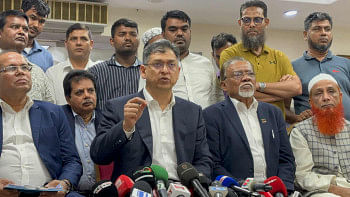Over half of farmland deemed economically unsustainable: survey

More than half of Bangladesh's agricultural land fails to generate optimal economic returns, raising serious concerns about the long-term viability of the country's farming practices, according to a recent survey.
The study found that 55.63 percent of agricultural land is classified as economically unsustainable based on farm output value per hectare — a key metric for assessing land productivity. By contrast, 44.37 percent of land meets the criteria for economically productive and sustainable use.
Conducted under the Sustainable Agriculture Statistics project by the Bangladesh Bureau of Statistics (BBS), the survey gathered field-level data from January 20 to March 5, 2025, encompassing both agricultural households and institutional farms.
Alarmingly, the report notes that just 1.20 percent of agricultural land has attained the 'desirable' level of sustainability, while 43.17 percent falls within the 'acceptable' category — evaluated across 11 key sustainability indicators.
The findings were unveiled at a dissemination event organised by the BBS in the capital yesterday.
One of the most pressing issues identified is soil degradation. The survey reveals that 72.75 percent of agricultural land is managed by households where at least half of the land is degraded, posing a major threat to long-term productivity.
Conversely, water availability appears to be a relative strength, with a national sustainability rate of 81.66 percent. Most agricultural households reportedly have categorised access to water — a vital input for crop success, particularly in the face of increasing climate variability.
However, fertiliser and pesticide management continue to pose significant challenges. Only 56.95 percent of agricultural land is managed by households practising at least two of eight recommended fertiliser strategies, highlighting gaps in awareness, affordability, or access to training.
Pesticide practices fare marginally worse, with a sustainability rate of just 51.37 percent, measured by usage types, safety compliance, and mitigation measures.
The adoption of agro-biodiversity-supportive practices — such as crop rotation, intercropping, and conservation agriculture — currently stands at a sustainability rate of 71.05 percent, indicating moderate uptake.
Meanwhile, the agricultural wage rate — defined as the proportion of land where unskilled labourers earn more than the national average — registers a sustainability rate of 60.12 percent. While this points to progress, labour economists have urged stronger wage parity and enforcement mechanisms.
Encouragingly, secure land tenure rights remain a strong point, with a national sustainability rate of 89.35 percent, reflecting robust legal and institutional support for farmers' land use rights.
The survey's most promising finding came from the Food Insecurity Experience Scale, which recorded a sustainability rate of 98.82 percent — the highest among all indicators. This suggests significant advancement in reducing hunger and improving food access at the household level.

 For all latest news, follow The Daily Star's Google News channel.
For all latest news, follow The Daily Star's Google News channel. 



Comments